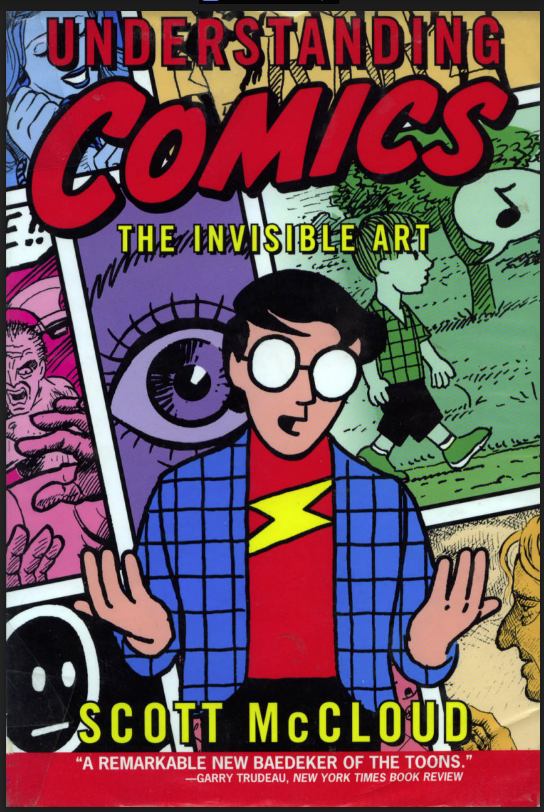Category: Readings (Page 4 of 4)
Our course text is Understanding Comics By Scott McCloud. It is a comic book about comic books. McCloud, in an incredibly accessible style, explains the details of how comics work: how they’re composed, read, and understood.
Chapter 3 – Blood in the Gutter – pp. 60
- In comics, what is “the gutter?”
- Discuss the concept of closure as it relates to comics.
- Of the six types of transitions in comics, choose one that you find most interesting and tell why.
- What’s the point of the three stories about Carl that are shown on pages 84-85?
Chapter 4 – Time Frames – pp. 94
- Is each frame in a comic a single moment in time? Why or why not?
- How does adding words change the length/time of a panel?
- In comics, time and space are “one and the same.” How so?
- On page 101, how does changing a panel’s shape affect its time?
- In comics, motion is usually reduced to what?
Chapters 1 & 2
Our course text is Understanding Comics By Scott McCloud. It is a comic book about comic books. McCloud, in an incredibly accessible style, explains the details of how comics work: how they’re composed, read, and understood.
Discussion Questions
Chapter 1 – Setting The Record Straight – pp. 2
- What is McCloud’s dilemma regarding comics as the book begins?
- What’s the difference between pictures and comics?
- According to McCloud, why isn’t it easy to define comics?
- To what definition does he eventually arrive?
- List the ancient civilizations that had some form of comics.
Chapter 2 – Vocabulary of Comics – pp. 24
- What is an icon?
- How does knowing what an icon help you “get” the author’s point about the “Treachery of Images”?
- Discuss the concept of the universality of the cartoon. How/why does this concept help readers of comics?





Recent Comments